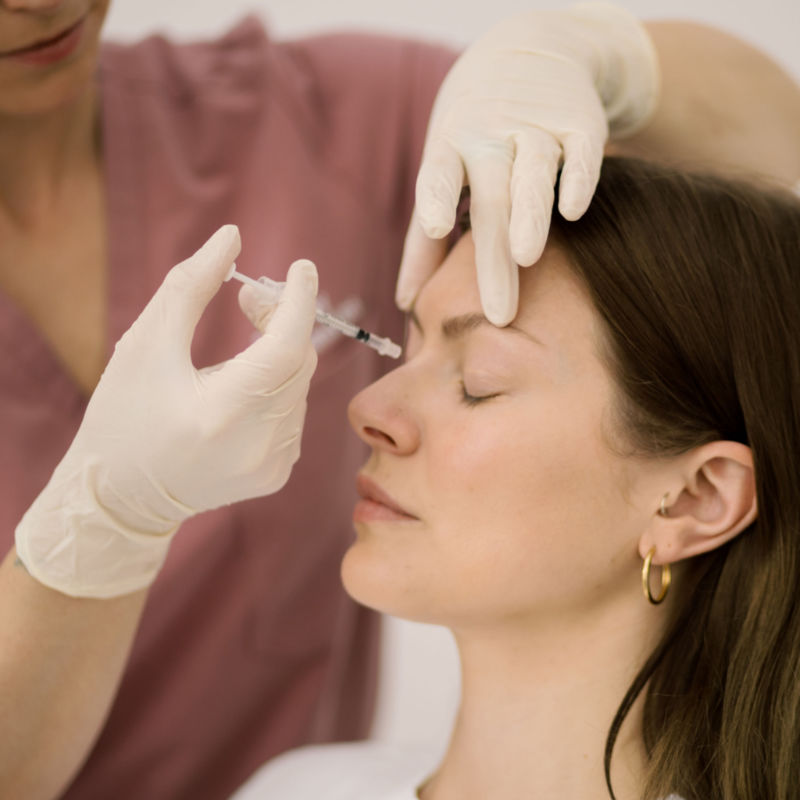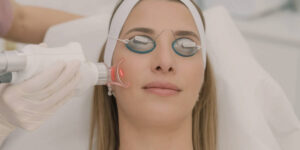

Non-surgical rhinoplasty
Non-surgical rhinoplasty, also known as liquid rhinoplasty, is a popular procedure to enhance the nose’s appearance without surgery. Dermal fillers, typically made of hyaluronic acid, are injected into specific areas to fill in depressions or bumps, create more definition, and improve symmetry.
One of the advantages of using hyaluronic acid fillers is that they are temporary, with results lasting typically around 9-18 months. This allows patients to try out the new look without committing to a permanent change.
If you are unhappy with the appearance of your nose but don’t want to undergo surgery, some signs that you might benefit from this procedure include:
- A small bump or depression on the bridge of the nose
- A crooked or asymmetrical nose
- A flat or undefined nasal tip
- A slightly drooping nasal tip
- A lack of overall definition or contour to the nose
Treatment snapshot
45 mins
appointment
2/5
discomfort
Minimal
downtime
Lasts
9-18 months
FAQs
Non-surgical rhinoplasty using dermal fillers is primarily aimed at enhancing the shape, symmetry, and proportion of the nose without surgery. While it can help address certain concerns such as filling in depressions or bumps and improving symmetry, it is important to note that it does not significantly reduce the overall size of the nose.
As with any medical procedure, there are potential risks and side effects associated with non-surgical rhinoplasty. These can include temporary swelling, bruising, redness, or tenderness at the injection site. Serious complications are rare but possible, such as infection, allergic reactions, or vascular-related issues.
Choosing a skilled practitioner who has a thorough understanding of facial anatomy and injection techniques is essential to minimise the risk of complications.
No, non-surgical rhinoplasty using dermal fillers is not permanent. The results of the procedure are temporary because the fillers used gradually break down over time. The longevity of the results can vary depending on factors such as the type of filler used and individual metabolism.
On average, the results of non-surgical rhinoplasty can last between 9 to 18 months. However, this can vary from person to person. To maintain the desired appearance, follow-up treatments are typically required to replenish the filler.
Non-surgical rhinoplasty using dermal fillers can create the illusion of a slimmer nose by strategically injecting fillers to reshape and refine specific areas. While it does not permanently reduce the size of the nose, it can help improve the overall proportions and create a more balanced appearance.
Non-surgical rhinoplasty using dermal fillers is generally well-tolerated and considered to be a minimally discomforting procedure. Prior to the treatment, a topical numbing cream or local anaesthesia may be applied to the treatment area to minimise any potential discomfort. Most patients report feeling only mild sensations during the injections, such as slight pressure or a pinching sensation.
There are several alternatives to a non-surgical rhinoplasty, depending on the specific concerns and goals of the patient. These include:
- Radiofrequency microneedling: A treatment that uses heat energy to stimulate collagen production and tighten the skin.
- CO2 laser resurfacing: A laser treatment that can improve skin texture and tighten the skin around the nose.
- Dermal fillers for other areas of the face: Depending on the specific concerns, fillers may be used in other areas of the face, such as the cheeks or chin, to achieve a more balanced and proportionate appearance.
- Surgical rhinoplasty: A traditional surgical procedure that involves making incisions to reshape the nose.








